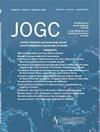使用OB Teleflex(一种混合产前远程医疗计划)患者的围产期结局
IF 2
Q2 OBSTETRICS & GYNECOLOGY
引用次数: 0
摘要
目的:与那些有资格但选择传统产前护理的人相比,评估参加OB Teleflex计划的人的产科结果,其中大约一半的产前护理是虚拟的。方法对2021年10月1日至2022年9月30日期间分娩的患者进行回顾性队列研究,将OB Teleflex参与与常规产前护理进行比较。低风险的单胎、存活、无异常胎儿、无高血压需要药物治疗的患者符合OB Teleflex的条件,并被纳入研究。反概率加权用于获得项目对包括初次剖宫产、新生儿重症监护病房住院、早产、妊娠期体重增加不足和妊娠期高血压疾病在内的综合不良结局的影响的无偏估计。结果研究期间在本中心分娩的674例患者中,有347例符合OB Teleflex的条件并符合研究标准。在347名符合条件的OB Teleflex患者中,63名(18%)选择参加该计划。选择OB Teleflex的患者与未选择OB Teleflex的患者相比,在种族、产次和剖宫产史上存在差异。在调整和未调整的不良结果综合分析中,OB Teleflex参与者与接受标准治疗的参与者之间没有差异。结论混合产前远程医疗与常规产前护理在孕产妇和围产儿不良结局发生率上无显著差异。像OB Teleflex这样的项目可能有助于在不恶化分娩结果的情况下消除护理障碍。需要更大规模的研究来调查混合产前护理是否能改善结果。本文章由计算机程序翻译,如有差异,请以英文原文为准。
Perinatal Outcomes Among Patients Using OB Teleflex, A Hybrid Prenatal Telemedicine Program
Objectives
To assess obstetric outcomes among participants of the OB Teleflex program, in which roughly half of prenatal care was virtual, compared to those who were eligible, but elected traditional prenatal care.
Methods
This retrospective cohort study of patients who delivered between October 1, 2021, and September 30, 2022, compared OB Teleflex participation to routine prenatal care. Low-risk patients with a singleton, viable, non-anomalous fetus, and without hypertension requiring medication, were eligible for OB Teleflex and included in the study. Inverse-probability weighting was used to obtain unbiased estimates of the program effect on a composite of adverse outcomes that included primary cesarean delivery, neonatal intensive care unit admission, preterm birth, insufficient gestational weight gain, and hypertensive disorders of pregnancy.
Results
Out of 674 patients who delivered at our centre during the study period, 347 were eligible for OB Teleflex and met the study criteria. Of the 347 patients eligible for OB Teleflex, 63 (18%) chose to participate in the program. Those who elected OB Teleflex compared to those who did not, differed by race, parity, and history of cesarean deliveries. In both adjusted and unadjusted analyses of the composite of adverse outcomes, there was no difference between OB Teleflex participants and those receiving standard care.
Conclusions
Hybrid prenatal telemedicine did not differ from standard prenatal care in the rate of adverse maternal and perinatal outcomes. Programs like OB Teleflex may help to remove barriers from care without worsening birth outcomes. Larger studies are needed to investigate whether hybrid prenatal care can improve outcomes.
求助全文
通过发布文献求助,成功后即可免费获取论文全文。
去求助
来源期刊

Journal of obstetrics and gynaecology Canada
OBSTETRICS & GYNECOLOGY-
CiteScore
3.30
自引率
5.60%
发文量
302
审稿时长
32 days
期刊介绍:
Journal of Obstetrics and Gynaecology Canada (JOGC) is Canada"s peer-reviewed journal of obstetrics, gynaecology, and women"s health. Each monthly issue contains original research articles, reviews, case reports, commentaries, and editorials on all aspects of reproductive health. JOGC is the original publication source of evidence-based clinical guidelines, committee opinions, and policy statements that derive from standing or ad hoc committees of the Society of Obstetricians and Gynaecologists of Canada. JOGC is included in the National Library of Medicine"s MEDLINE database, and abstracts from JOGC are accessible on PubMed.
 求助内容:
求助内容: 应助结果提醒方式:
应助结果提醒方式:


